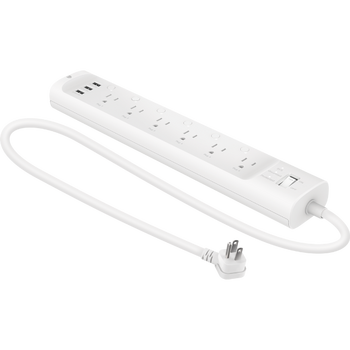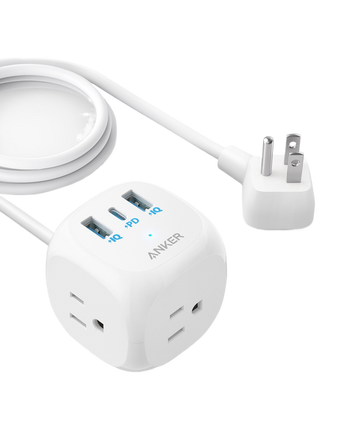- Smart home integration
- Energy monitoring for better management
- Multiple outlets and USB ports
- Remote and voice control capabilities
- Portable and compact
- Multiple charging options
- Includes surge protection
- Requires Wi-Fi for smart features
- Higher cost compared to non-smart power strips
- Limited outlet count
- Shorter power cord
TP-Link Kasa Smart HS300 vs Anker PowerPort Cube
When it comes to managing multiple devices and appliances, power strips have become a staple in many households. Two popular options on the market are the TP-Link Kasa Smart HS300 and the Anker PowerPort Cube. While both products aim to provide a convenient way to plug in and manage your devices, they differ significantly in terms of features, functionality, and smart capabilities.
Design and Build
The TP-Link Kasa Smart HS300 is a smart power strip that boasts a sleek and compact design, measuring 6 inches long and 2.5 inches wide. It features six outlets, three USB ports, and a built-in cord management system to keep your cables organized. The device has a sturdy build and feels premium in the hand.
In contrast, the Anker PowerPort Cube is a compact power strip that measures just 2.2 inches on each side. It features three outlets and three USB ports, making it an excellent option for small spaces or travel. The cube-shaped design allows it to fit easily into tight areas, such as behind furniture or in a backpack.
Smart Capabilities
One of the standout features of the TP-Link Kasa Smart HS300 is its smart capabilities. This power strip can be controlled remotely using the Kasa app, allowing you to turn devices on and off, set schedules, and monitor energy usage. The device also supports voice control through Amazon Alexa and Google Assistant, making it easy to manage your devices with just your voice.
The Anker PowerPort Cube, on the other hand, does not have any smart capabilities. It is a basic power strip that provides a convenient way to plug in multiple devices at once. While it may lack the advanced features of the Kasa Smart HS300, it makes up for it with its compact size and affordability.
Energy Monitoring
The TP-Link Kasa Smart HS300 also includes energy monitoring capabilities, allowing you to track the power consumption of each device connected to the strip. This feature can help you identify energy-hungry devices and make informed decisions about your energy usage.
The Anker PowerPort Cube does not have built-in energy monitoring capabilities, but it does feature a compact design that makes it easy to use in small spaces where energy efficiency may be less of a concern.
Price
In terms of pricing, the Anker PowerPort Cube is significantly more affordable than the TP-Link Kasa Smart HS300. The Cube typically retails for around $20-$30, while the Kasa Smart HS300 can cost upwards of $50-$60.
Conclusion
Ultimately, the choice between the TP-Link Kasa Smart HS300 and the Anker PowerPort Cube depends on your specific needs and preferences. If you're looking for a smart power strip with advanced features like remote control, energy monitoring, and voice assistant integration, the Kasa Smart HS300 is an excellent option.
However, if you prioritize affordability and compact design, the Anker PowerPort Cube may be the better choice. Both products are high-quality power strips that can provide a convenient way to manage your devices, but they cater to different needs and budgets.
In the world of power strips, these two products stand out for their unique features and designs. Whether you're looking for a smart and feature-rich option or a basic and compact one, there's a product on the market that can meet your needs.































